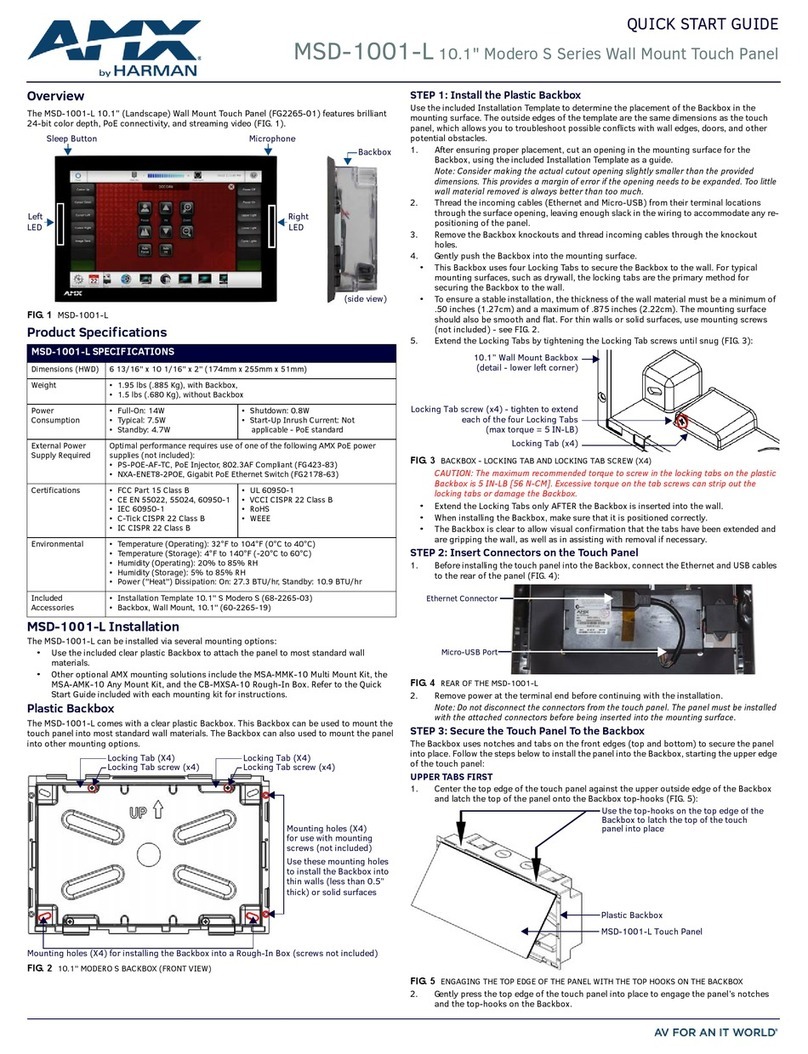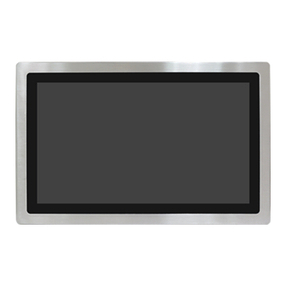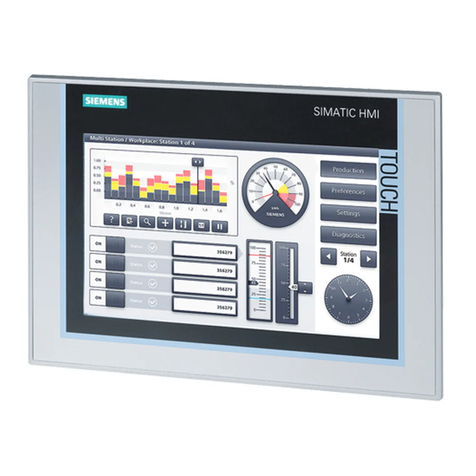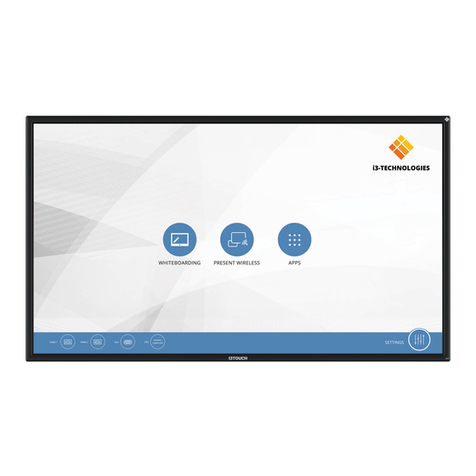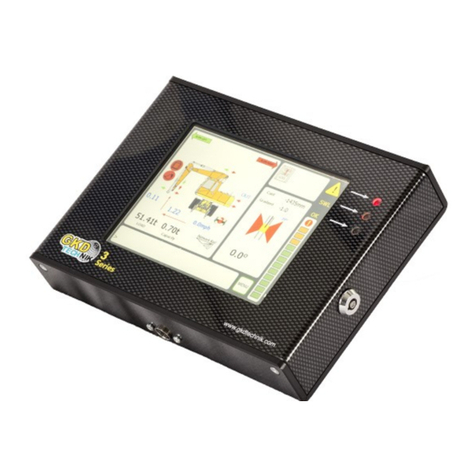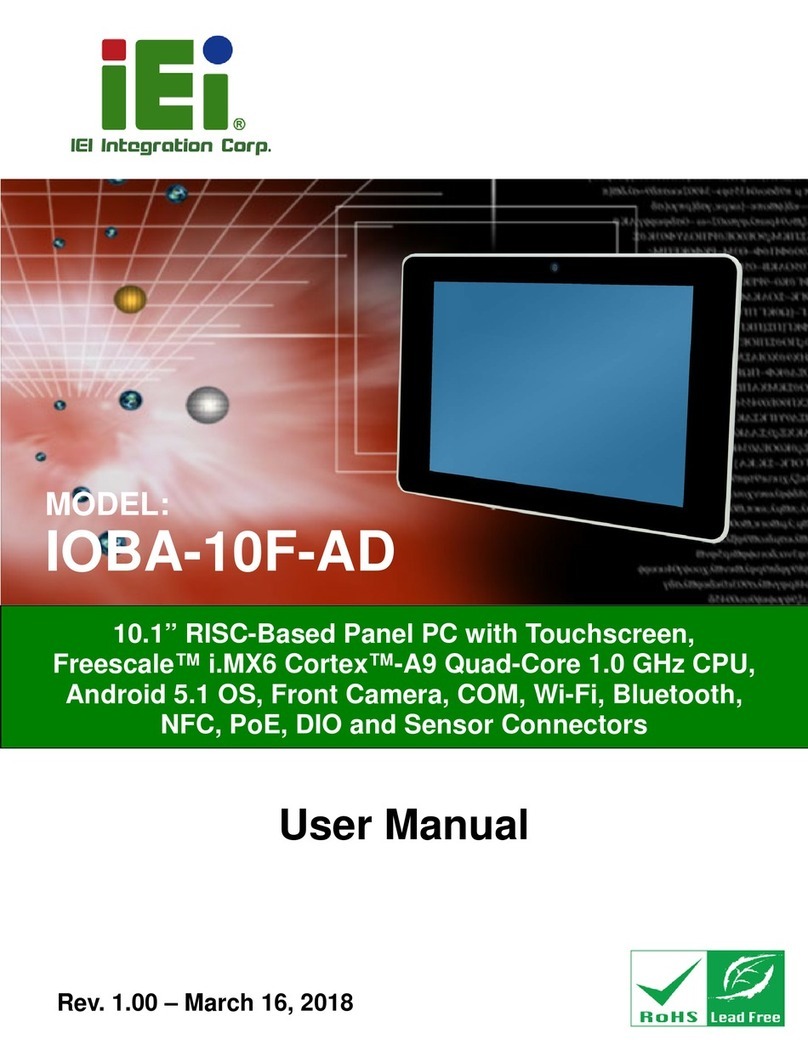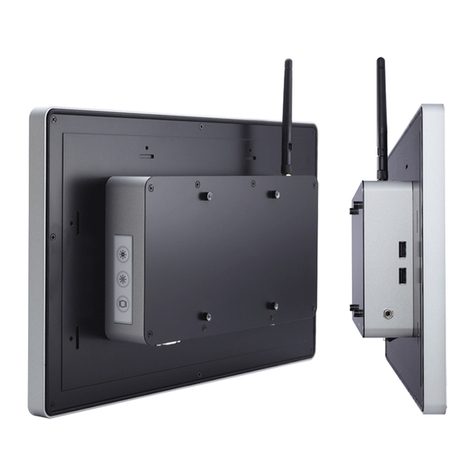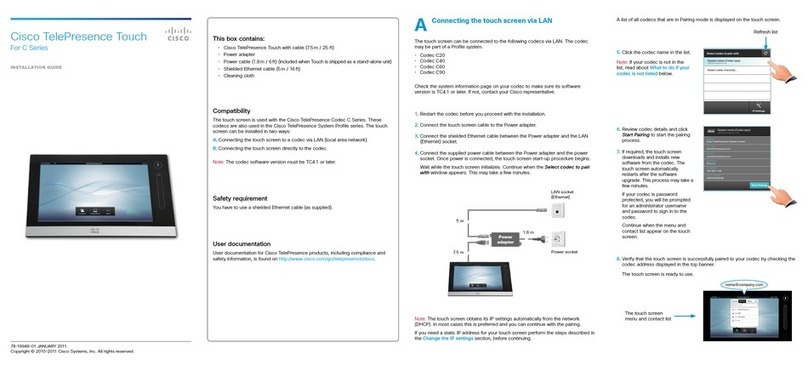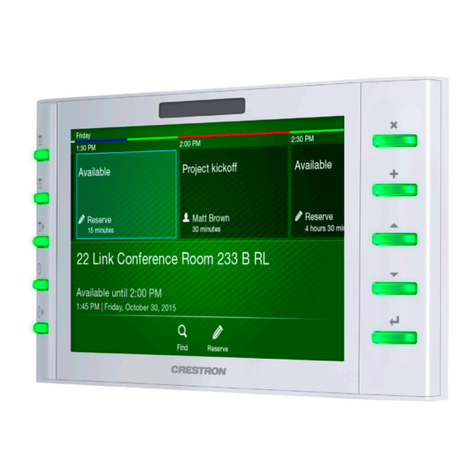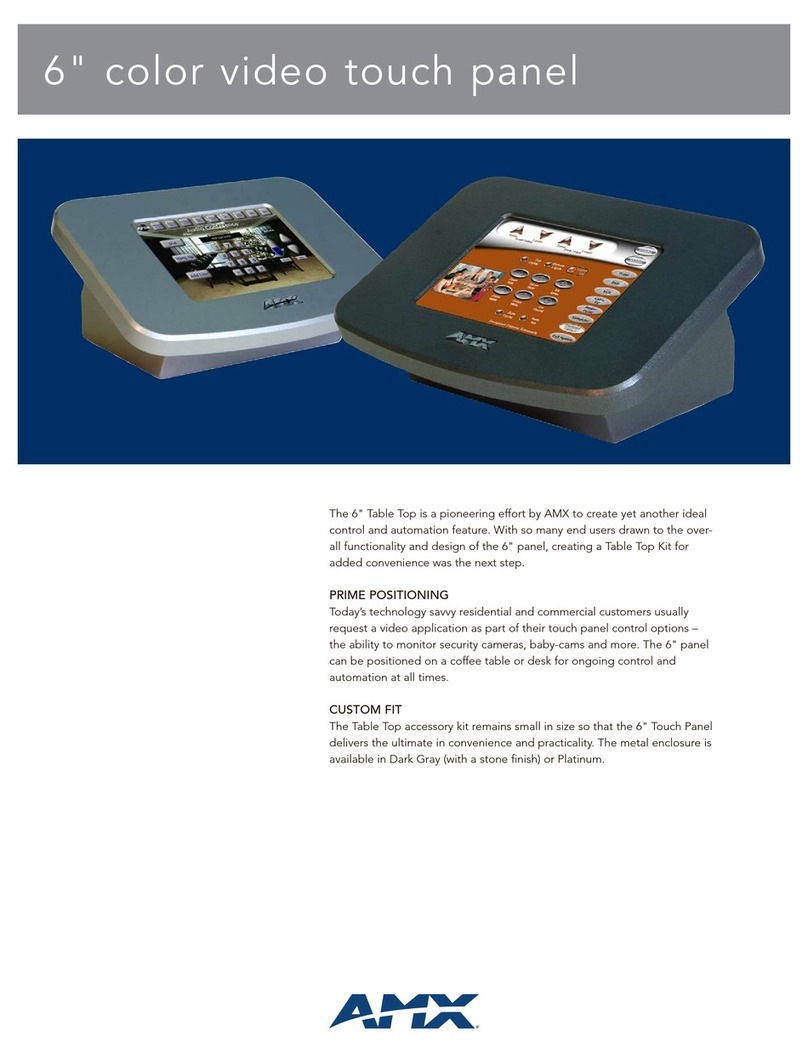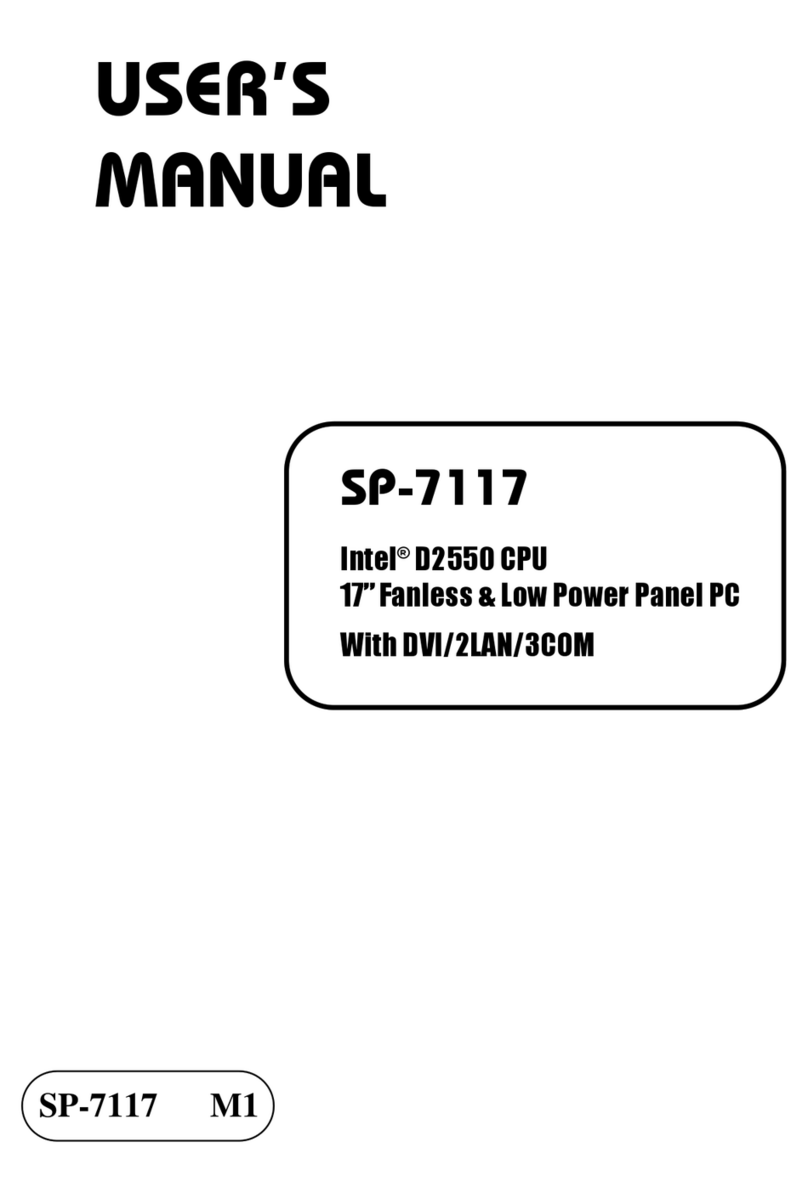Fire-Lite ACC-25DA User manual

B1
P/N 52265:B1 ECN 10-278
Document 52265
6/8/2010 Rev:
Distributed Audio Panel
ACC-25/50DA &
ACC-25/50DAZS
Instruction Manual

2Distributed Audio Panel Manual — P/N 52265:B1 6/8/2010
Fire Alarm System Limitations
While a fire alarm system may lower insurance rates, it is not a substitute for fire insurance!
An automatic fire alarm system—typically made up of
smoke detectors, heat detectors, manual pull stations, audible
warning devices, and a fire alarm control panel with remote
notification capability—can provide early warning of a develop-
ing fire. Such a system, however, does not assure protection
against property damage or loss of life resulting from a fire.
The Manufacturer recommends that smoke and/or heat detec-
tors be located throughout a protected premise following the
recommendations of the National Fire Protection Association
Standard 72 (NFPA 72), manufacturer's recommendations,
State and local codes, and the recommendations contained in
the Guides for Proper Use of System Smoke Detectors, which
are made available at no charge to all installing dealers.
These documents can be found at http://www.systemsen-
sor.com/html/applicat.html. A study by the Federal Emer-
gency Management Agency (an agency of the United States
government) indicated that smoke detectors may not go off in
as many as 35% of all fires. While fire alarm systems are
designed to provide early warning against fire, they do not
guarantee warning or protection against fire. A fire alarm sys-
tem may not provide timely or adequate warning, or simply
may not function, for a variety of reasons:
Smoke detectors may not sense fire where smoke cannot
reach the detectors such as in chimneys, in or behind walls, on
roofs, or on the other side of closed doors. Smoke detectors
also may not sense a fire on another level or floor of a building.
A second-floor detector, for example, may not sense a first-
floor or basement fire.
Particles of combustion or “smoke” from a developing fire
may not reach the sensing chambers of smoke detectors
because:
• Barriers such as closed or partially closed doors, walls, or
chimneys may inhibit particle or smoke flow.
• Smoke particles may become “cold,” stratify, and not reach
the ceiling or upper walls where detectors are located.
• Smoke particles may be blown away from detectors by air
outlets.
• Smoke particles may be drawn into air returns before
reaching the detector.
The amount of “smoke” present may be insufficient to alarm
smoke detectors. Smoke detectors are designed to alarm at
various levels of smoke density. If such density levels are not
created by a developing fire at the location of detectors, the
detectors will not go into alarm.
Smoke detectors, even when working properly, have sensing
limitations. Detectors that have photoelectronic sensing
chambers tend to detect smoldering fires better than flaming
fires, which have little visible smoke. Detectors that have ion-
izing-type sensing chambers tend to detect fast-flaming fires
better than smoldering fires. Because fires develop in different
ways and are often unpredictable in their growth, neither type
of detector is necessarily best and a given type of detector
may not provide adequate warning of a fire.
Smoke detectors cannot be expected to provide adequate
warning of fires caused by arson, children playing with
matches (especially in bedrooms), smoking in bed, and violent
explosions (caused by escaping gas, improper storage of
flammable materials, etc.).
Heat detectors do not sense particles of combustion and
alarm only when heat on their sensors increases at a predeter-
mined rate or reaches a predetermined level. Rate-of-rise
heat detectors may be subject to reduced sensitivity over time.
For this reason, the rate-of-rise feature of each detector
should be tested at least once per year by a qualified fire pro-
tection specialist. Heat detectors are designed to protect
property, not life.
IMPORTANT! Smoke detectors must be installed in the
same room as the control panel and in rooms used by the sys-
tem for the connection of alarm transmission wiring, communi-
cations, signaling, and/or power. If detectors are not so
located, a developing fire may damage the alarm system, crip-
pling its ability to report a fire.
Audible warning devices such as bells may not alert people
if these devices are located on the other side of closed or
partly open doors or are located on another floor of a building.
Any warning device may fail to alert people with a disability or
those who have recently consumed drugs, alcohol or medica-
tion. Please note that:
• Strobes can, under certain circumstances, cause seizures
in people with conditions such as epilepsy.
• Studies have shown that certain people, even when they
hear a fire alarm signal, do not respond or comprehend the
meaning of the signal. It is the property owner's responsi-
bility to conduct fire drills and other training exercise to
make people aware of fire alarm signals and instruct them
on the proper reaction to alarm signals.
• In rare instances, the sounding of a warning device can
cause temporary or permanent hearing loss.
A fire alarm system will not operate without any electrical
power. If AC power fails, the system will operate from standby
batteries only for a specified time and only if the batteries have
been properly maintained and replaced regularly.
Equipment used in the system may not be technically com-
patible with the control panel. It is essential to use only equip-
ment listed for service with your control panel.
Telephone lines needed to transmit alarm signals from a
premise to a central monitoring station may be out of service
or temporarily disabled. For added protection against tele-
phone line failure, backup radio transmission systems are rec-
ommended.
The most common cause of fire alarm malfunction is inade-
quate maintenance. To keep the entire fire alarm system in
excellent working order, ongoing maintenance is required per
the manufacturer's recommendations, and UL and NFPA stan-
dards. At a minimum, the requirements of NFPA 72 shall be
followed. Environments with large amounts of dust, dirt or
high air velocity require more frequent maintenance. A main-
tenance agreement should be arranged through the local man-
ufacturer's representative. Maintenance should be scheduled
monthly or as required by National and/or local fire codes and
should be performed by authorized professional fire alarm
installers only. Adequate written records of all inspections
should be kept.
Limit-C1-2-2007

Distributed Audio Panel Manual — P/N 52265:B1 6/8/2010 3
Installation Precautions
Adherence to the following will aid in problem-free installation with long-term reliability:
WARNING - Several different sources of power can be
connected to the fire alarm control panel. Disconnect all
sources of power before servicing. Control unit and associ-
ated equipment may be damaged by removing and/or insert-
ing cards, modules, or interconnecting cables while the unit is
energized. Do not attempt to install, service, or operate this
unit until manuals are read and understood.
CAUTION - System Re-acceptance Test after Software
Changes: To ensure proper system operation, this product
must be tested in accordance with NFPA 72 after any pro-
gramming operation or change in site-specific software. Re-
acceptance testing is required after any change, addition or
deletion of system components, or after any modification,
repair or adjustment to system hardware or wiring. All compo-
nents, circuits, system operations, or software functions known
to be affected by a change must be 100% tested. In addition,
to ensure that other operations are not inadvertently affected,
at least 10% of initiating devices that are not directly affected
by the change, up to a maximum of 50 devices, must also be
tested and proper system operation verified.
This system meets NFPA requirements for operation at 0-49º
C/32-120º F and at a relative humidity 93% ± 2% RH (non-
condensing) at 32°C ± 2°C (90°F ± 3°F). However, the useful
life of the system's standby batteries and the electronic com-
ponents may be adversely affected by extreme temperature
ranges and humidity. Therefore, it is recommended that this
system and its peripherals be installed in an environment with
a normal room temperature of 15-27º C/60-80º F.
Verify that wire sizes are adequate for all initiating and indi-
cating device loops. Most devices cannot tolerate more than a
10% I.R. drop from the specified device voltage.
Like all solid state electronic devices, this system may
operate erratically or can be damaged when subjected to light-
ning induced transients. Although no system is completely
immune from lightning transients and interference, proper
grounding will reduce susceptibility. Overhead or outside aerial
wiring is not recommended, due to an increased susceptibility
to nearby lightning strikes. Consult with the Technical Ser-
vices Department if any problems are anticipated or encoun-
tered.
Disconnect AC power and batteries prior to removing or
inserting circuit boards. Failure to do so can damage circuits.
Remove all electronic assemblies prior to any drilling, filing,
reaming, or punching of the enclosure. When possible, make
all cable entries from the sides or rear. Before making modifi-
cations, verify that they will not interfere with battery, trans-
former, or printed circuit board location.
Do not tighten screw terminals more than 9 in-lbs. Over-
tightening may damage threads, resulting in reduced terminal
contact pressure and difficulty with screw terminal removal.
This system contains static-sensitive components.
Always ground yourself with a proper wrist strap before han-
dling any circuits so that static charges are removed from the
body. Use static suppressive packaging to protect electronic
assemblies removed from the unit.
Follow the instructions in the installation, operating, and pro-
gramming manuals. These instructions must be followed to
avoid damage to the control panel and associated equipment.
FACP operation and reliability depend upon proper installation.
Precau-D1-9-2005
FCC Warning
WARNING: This equipment generates, uses, and can
radiate radio frequency energy and if not installed and
used in accordance with the instruction manual may
cause interference to radio communications. It has been
tested and found to comply with the limits for class A
computing devices pursuant to Subpart B of Part 15 of
FCC Rules, which is designed to provide reasonable
protection against such interference when devices are
operated in a commercial environment. Operation of this
equipment in a residential area is likely to cause interfer-
ence, in which case the user will be required to correct
the interference at his or her own expense.
Canadian Requirements
This digital apparatus does not exceed the Class A limits
for radiation noise emissions from digital apparatus set
out in the Radio Interference Regulations of the Cana-
dian Department of Communications.
Le present appareil numerique n'emet pas de bruits radi-
oelectriques depassant les limites applicables aux appa-
reils numeriques de la classe A prescrites dans le
Reglement sur le brouillage radioelectrique edicte par le
ministere des Communications du Canada.
LiteSpeed™ is a trademark; and FireLite® Alarms is a registered trademark of Honeywell International Inc.Microsoft® and Windows® are registered
trademarks of the Microsoft Corporation.
©2010 by Honeywell International Inc. All rights reserved. Unauthorized use of this document is strictly prohibited.

4Distributed Audio Panel Manual — P/N 52265:B1 6/8/2010
Software Downloads
In order to supply the latest features and functionality in fire alarm and life safety technology to our customers, we make
frequent upgrades to the embedded software in our products. To ensure that you are installing and programming the latest
features, we strongly recommend that you download the most current version of software for each product prior to
commissioning any system. Contact Technical Support with any questions about software and the appropriate version for
a specific application.
Documentation Feedback
Your feedback helps us keep our documentation up-to-date and accurate. If you have any comments or suggestions about
our online Help or printed manuals, you can email us.
Please include the following information:
•Product name and version number (if applicable)
•Printed manual or online Help
•Topic Title (for online Help)
•Page number (for printed manual)
•Brief description of content you think should be improved or corrected
•Your suggestion for how to correct/improve documentation
Send email messages to:
FireSystems.T[email protected]
Please note this email address is for documentation feedback only. If you have any technical issues, please contact
Technical Services.

Distributed Audio Panel Manual — P/N 52265:B1 6/8/2010 5
Table of Contents
Section 1: Product Description .............................................................................................11
1.1: Product Features ..........................................................................................................................................12
1.2: Specifications...............................................................................................................................................17
1.3: Indicators .....................................................................................................................................................20
1.3.1: LEDs Located on Main Circuit Board:..............................................................................................20
1.3.2: ACC-ZPM Zone Page Module (ACC-25/50DAZS Only) ................................................................20
1.3.3: ACC-AAM25 Audio Amplifier Module ...........................................................................................20
1.4: Circuits.........................................................................................................................................................20
1.5: Components .................................................................................................................................................21
1.6: Optional Modules .......................................................................................................................................23
1.7: Getting Started .............................................................................................................................................23
1.7.1: ACC-25/50 With ACC-25/50DA(s), System Requiring More Than 50 Watts of Audio Power ......24
1.7.2: ACC-25/50ZS/T With ACC-25/50DAZS, System Requiring More Than 50 Watts of Audio Power..
24
Section 2: Field Programming............................................................................................... 25
2.1: S1 DIP Switch Settings on Distributed Audio Motherboard.......................................................................26
2.2: S2 DIP Switch Settings on Distributed Audio Motherboard.......................................................................28
2.3: S3 - Battery Charger Switch on Distributed Audio Motherboard ...............................................................28
2.4: ACC-ZPM Zone Page Module ....................................................................................................................28
2.4.1: S1 DIP Switch Settings on ACC-ZPM..............................................................................................28
2.4.2: S2 and S3 Addressing Rotary Switches ............................................................................................29
ACC-ZPM Addressing for Style Y (Class B) Audio Circuits..............................................................29
ACC-ZPM Addressing for Style Z (Class A) Audio Circuits..............................................................29
2.5: ACC-ZSM Zone Splitter Module ................................................................................................................30
2.6: Switch SW1 on ACC-AAM25 Audio Amplifier Module ...........................................................................30
2.7: Switch SW1 Settings on Optional FC-MGM Module.................................................................................31
Section 3: Installation............................................................................................................. 33
3.1: Mounting......................................................................................................................................................33
3.2: Backbox Installation ....................................................................................................................................33
3.2.1: Transformer Installation ....................................................................................................................36
3.3: Operating Power ..........................................................................................................................................37
3.4: Auxiliary DC Power Output Connections ...................................................................................................39
3.5: Input Circuits ...............................................................................................................................................39
3.5.1: Master Command Bus .......................................................................................................................39
3.5.2: CMD Input Circuits ...........................................................................................................................40
3.5.3: Trouble Contact Input........................................................................................................................40
3.6: Output Circuits.............................................................................................................................................41
3.6.1: Trouble Relay - TB1..........................................................................................................................41
3.6.2: AC Power Loss Relay - TB11 ...........................................................................................................41
3.6.3: Notification Appliance Circuit (Speakers) ........................................................................................42
3.6.4: ACC-ZPM Zone Page Module - Zone System Serial Link...............................................................42
3.6.5: ACC-ZSM Zone Splitter Module......................................................................................................44
3.7: UL Power-limited Wiring Requirements.....................................................................................................45
3.8: Installation of Option Modules ....................................................................................................................46
3.8.1: Audio Amplifier Module (ACC-AAM25) ........................................................................................46
3.8.2: 70.7 VRMS Transformer Module (FC-XRM70) ................................................................................47
3.8.3: FC-MGM Message Generator Module..............................................................................................48
3.8.4: FC-LPS Local Playback Speaker Module.........................................................................................49
Section 4: Operating Instructions ......................................................................................... 52
4.1: Message Recording......................................................................................................................................52
4.1.1: Record Push Button (on optional FC-MGM Module) ......................................................................52
4.2: Playback Button...........................................................................................................................................53

Table of Contents
6Distributed Audio Panel Manual — P/N 52265:B1 6/8/2010
4.2.1: LEDs on Main Circuit Board.............................................................................................................54
4.2.2: LEDs on Optional Message Generator Module (FC-MGM).............................................................54
4.2.3: LEDs on Audio Amplifier Module....................................................................................................55
4.2.4: LEDs on ACC-ZPM (ACC-25/50DAZS Only) ................................................................................55
4.3: Operation......................................................................................................................................................55
4.3.1: Fire Alarm..........................................................................................................................................55
4.3.2: Fire Alarm Restoral ...........................................................................................................................55
4.3.3: General Page Using Optional Remote Microphone (ACC-25/50DA Only) .....................................55
4.3.4: Emergency Page Using Optional Remote Microphone (ACC-25/50DA Only)................................55
4.3.5: Trouble Condition Response .............................................................................................................56
4.3.6: Trouble Condition Restoral ...............................................................................................................57
Section 5: Application Examples .......................................................................................... 59
5.1: ACC-25/50 & ACC-25/50DA Step-by-Step Install/Setup ..........................................................................59
5.2: ACC-25/50ZS/T & ACC-25/50DAZS Step-by-Step Install/Setup .............................................................59
5.3: One Speaker Circuit.....................................................................................................................................60
5.3.1: Single Channel...................................................................................................................................60
5.3.2: Dual Channel .....................................................................................................................................61
5.4: One Speaker Circuit With Backup...............................................................................................................62
5.4.1: Single Channel...................................................................................................................................62
5.4.2: Dual Channel .....................................................................................................................................63
5.5: Two Speaker Circuits ...................................................................................................................................64
5.5.1: Single Channel...................................................................................................................................64
5.5.2: Dual Channel .....................................................................................................................................65
5.6: ACC-25/50DA High-Power, Multi-floor Application.................................................................................66
5.7: ACC-25/50 Series and ACC-25/50DA Installation.....................................................................................67
5.8: 16 Theater Cineplex Utilizing ACC-25/50ZS/T..........................................................................................69
5.9: Audio Command Center 24 Zone System ...................................................................................................70
Section 6: Power Supply Calculations ................................................................................. 72
6.1: Overview......................................................................................................................................................72
6.2: Calculating the AC Branch Circuit ..............................................................................................................72
6.3: Calculating the System Current Draw .........................................................................................................72
6.3.1: Overview............................................................................................................................................72
6.3.2: How to use Table 6.2 to calculate system current draws...................................................................73
6.4: Calculating the Battery Size.........................................................................................................................74
6.4.1: NFPA Battery Requirements .............................................................................................................74
6.4.2: Selecting and Locating Batteries .......................................................................................................74
Appendix A: Digital Voice Messages.................................................................................... 76
Appendix B: Addressable Module Connections.................................................................. 77
Appendix C: Wiring Requirements ....................................................................................... 78
Index ........................................................................................................................................ 79

Distributed Audio Panel Manual — P/N 52265:B1 6/8/2010 7
This audio panel has been designed to comply with standards set forth by the following regulatory
agencies:
• Underwriters Laboratories Standard UL 864
• NFPA 72 National Fire Alarm Code
NFPA Standards
This Audio Distribution Panel complies with the following NFPA Standards:
NFPA 72 National Fire Alarm Code
Note: Audible signal appliances used in public mode applications, are required to have
minimum sound levels of 75 dBA at 10 feet (3 meters) and a maximum level of 120 dBA at the
minimum hearing distance from the audible appliance.
To ensure that the appliance is clearly heard, the audible appliance sound level must be at least
15 dBA above the average ambient sound level or 5 dBA above the maximum sound level with
a duration of at least 60 seconds, depending on which level is greater, with the sound level
being measured 5 feet (1.5 meters) above the floor.
Underwriters Laboratories Documents:
UL 38 Manually Actuated Signaling Boxes
UL 217 Smoke Detectors, Single and Multiple Station
UL 228 Door Closers–Holders for Fire Protective Signaling Systems
UL 268 Smoke Detectors for Fire Protective Signaling Systems
UL 268A Smoke Detectors for Duct Applications
UL 346 Waterflow Indicators for Fire Protective Signaling Systems
UL 464 Audible Signaling Appliances
UL 521 Heat Detectors for Fire Protective Signaling Systems
UL 864 Standard for Control Units for Fire Protective Signaling Systems
UL 1481 Power Supplies for Fire Protective Signaling Systems
UL 1638 Visual Signaling Appliances
UL 1711 Amplifiers for Fire Protective Signaling Systems
UL 1971 Signaling Devices for Hearing Impaired
Other:
NEC Article 250 Grounding
NEC Article 300 Wiring Methods
NEC Article 760 Fire Protective Signaling Systems
Applicable Local and State Building Codes
Requirements of the Local Authority Having Jurisdiction (LAHJ)
Fire•Lite Documents
Fire•Lite Device Compatibility Document Document #15384
FCPS-24F(E) Field Charger/Power Supply Document #50079
FCPS-2404 Field Charger/Power Supply Document #51486
FCPS-24FS Field Charger/Power Supply Document #51883
MS-9200(C)/E Technical Manual Document #51003
MS-9200UDTechnical Manual Document #51906
Before proceeding, the installer should be familiar with the following documents.

8Distributed Audio Panel Manual — P/N 52265:B1 6/8/2010
MS-9600 Technical Manual Document #51335
MS-5210UDTechnical Manual Document #50193
ACC-25/50 Series Manual Document #51889
SLC Wiring Manual (with addressable devices) Document #51309
This product has been certified to comply with the requirements in the Standard for Control Units and Accessories for Fire
Alarm Systems, UL 864, 9th Edition. Operation of this product with products not tested for UL 864, 9th Edition has not
been evaluated. Such operation requires the approval of the local Authority Having Jurisdiction (AHJ).

Distributed Audio Panel Manual — P/N 52265:B1 6/8/2010 9
Audio Command Center Distributed System
25W Speaker Circuit
25W Speaker Circuit
25W Speaker Circuit
25W Speaker Circuit
To Additional ACC-25/50DA Panels
FACP Control
Master Command Bus
Audio Riser
Audio Riser
25W Speaker Circuit
25W Speaker Circuit
Master Command Bus
FACP Control
ACC-25/50DA
accdadistsys.CDR
1. The FACP can automatically control the audio system via the
CMD inputs on the ACC-25/50 and ACC-25/50DA(s).
2. The Audio Riser connects the audio output of the ACC-25/50 to
each of the ACC-25/50DA(s).
3. The Master Command Bus provides an All-Call trigger from the
ACC-25/50 to the ACC-25/50DA(s).
1. Maximum of 25 Distributed Audio panels may be used in this
configuration.
FACP Control
Audio Riser
Audio Riser
Master Command Bus
ACC-25/50DA
ACC-25/50

10 Distributed Audio Panel Manual — P/N 52265:B1 6/8/2010
Audio Command Center Zone System
Up to 24 Zones @ 150W (max.)
Speaker Circuit #16
Speaker Circuit #9
Speaker Circuit #17
Speaker Circuit #24
Audio Riser
Speaker Circuit #1
Speaker Circuit #8
ACC Control Serial Link (RS-485)
Automatic Control via the
ACS Link or CMD Input
ACC-25/50DA
accdazsdistsys.wmf
1. The FACP controls the audio system via the ACS Link or
CMD inputs on the ACC-25/50ZS.
2. The Audio Riser connects the audio output of the ACC-
25/50ZS to each of the ACC-25/50DAZS(s) to distribute alarm
or paging audio.
3. The ACC-25/50ZS uses the Control Serial Link to control the
routing of the alarm or paging audio.
4. Riser conductors must be installed in accordance with the
survivability from attack by fire requirements in National Fire
Alarm Code, NFPA 72.
Audio Riser
ACC Control Serial Link (RS-485)
ACC-25/50DA
ACC-25/50
Zone Split Configuration

Distributed Audio Panel Manual — P/N 52265:B1 6/8/2010 11
Section 1: Product Description
The AUDIO•COMMAND•CENTER•25/50DA Distributed Panel (ACC-25/50DA) and
AUDIO•COMMAND•CENTER•25/50DAZS Zone System Distributed Audio Panel (ACC-
25/50DAZS) are single channel, 25 watt, 25 VRMS, emergency voice evacuation panels which are
designed to interface directly to the AUDIO•COMMAND•CENTER•25/50 (ACC-25/50) Series
audio panels. The ACC-25/50DA Series, which supports up to eight speaker circuits, can be used
to distribute voice evacuation audio over a building’s speaker system. The audio riser input pro-
vides automatic gain control (AGC) which compensates for any audio signal loss due to circuit
loading or cable length, ensuring that a full output signal is delivered to the speakers. An optional
FC-MGM message generator is available with standard pre-recorded message or programmable
message capability (up to sixty seconds). An integral power supply with battery charger supplies
operational power. An ACC-AAM25 audio amplifier is provided standard with each base unit. An
optional second ACC-AAM25 amplifier is also available for backup purposes or to provide an
additional 25 watt speaker circuit. Optional 70 VRMS conversion modules are also available for
installations where 70 VRMS speakers are to be installed or already exist. The modular design
allows for ease-of-serviceability.
The ACC-25/50DA can be automatically activated by the five CMD inputs from an FACP. The
ACC-25/50DAZS can be automatically activated via the Zone System serial communications link
from the ACC-25/50ZS/T.
Two Command Input Circuits can be independently field programmed for activation by an FACP
Notification Appliance Circuit reverse polarity or by closure of a supervised normally open contact
and three Command Input Circuits activate on contact closure. CMD 1 and CMD 2 provide termi-
nals for NAC input and output to allow installation of the audio panel anywhere along the NAC cir-
cuit being used to activate it.
The ACC-25/50DAZS includes an ACC-ZPM Zone Page Module and an ACC-ZSM Zone Splitter
Module. These modules provide up to eight speaker circuits that may be manually or automatically
activated.
Significant technological enhancements set the ACC-25/50DA Series apart from other voice pan-
els. These enhancements include full supervision in both active (alarm or music) and standby con-
ditions.
Supervision is provided for:
amplifier outputs
field wiring (shorts and opens)
optional message generator (FC-MGM)
all tone generators
optional remote microphone
If the audio riser input fails, the distributed audio panel can be programmed to switch to the built-in
tone generator or optional FC-MGM Message Generator. If the FC-MGM fails or is not installed,
the tone generators on the main circuit board can be automatically switched in as backups.
Power is fed independently to each amplifier so that a short circuit in one amplifier will not shut
down the other. Full output power of 25 watts per amplifier is generated while in a low battery con-
dition. Power is not diminished when the optional 70 VRMS transformer module is installed. Audio
is amplified utilizing modern integrated circuits as opposed to transformer technology. This pro-
vides for very low signal distortion for crystal clear audio.
NOTE: Music cannot be used for ACC-25/50DAZS.

12 Distributed Audio Panel Manual — P/N 52265:B1 6/8/2010
Product Description Product Features
Primary applications for the audio panels include structures such as restaurants, schools, auditori-
ums, places of worship, buildings with occupancies over 50, etc. The ACC-25/50DA Distributed
Audio Series is designed to interface directly to addressable or conventional fire alarm control pan-
els or with the ACC-25/50 series audio control panels to distribute audio in systems that require
more than 50 watts.
1.1 Product Features
• 25 watts of 25 VRMS audio power (expandable to 50 watts) per panel
• Automatic gain control (AGC) circuit ensures an unattenuated audio signal on the audio riser
input
• Optional 70.7 VRMS conversion module available for each amplifier (note that speaker wiring
continues to be supervised in standby, alarm and when background music is playing with this
option module installed)
• Modular design for maximum system flexibility
• Unobstructed module access and removable terminal blocks for ease of servicing and module
replacement
• Designed to allow easy system expansion
• Five Command Input Circuits:
CMD1 and CMD2 are field selectable to be activated from 12 or 24 VDC Notification
Appliance Circuits (reverse polarity) or contact closures
CMD3, CMD4 and CMD5 are activated by contact closures
• Speaker Circuits
single Style Y or Z speaker circuit (one ACC-AAM25 Audio Amplifier provided with base
unit)
two Style Y or Style Z speaker circuits (with optional second ACC-AAM25 Audio
Amplifier installed)
eight Style Y or four Style Z speaker circuits using ACC-ZSM Zone Splitter Module
• ACC-25/50DAZS can be controlled by the ACC-25/50ZS/T via the Zone System serial link
(EIA-485) to the ACC-ZPM.
• Optional FC-MGM Message Generator Module with standard, prerecorded message:
“May I have your attention please. May I have your attention please. The signal you
have just heard indicates a report of a fire in this building. Please proceed to the nearest
exit and leave the building. Do not reenter the building unless directed to do so by the
proper authorities.”
• Field selectable message capability and custom message field recording capability using
optional FC-MGM module’s audio input RCA jack or mini Audio jack for connection to a
personal computer
• Record/playback control switches on optional FC-MGM
• One 60-second, two 30-second, three 20-second or four 15-second custom messages on
optional FC-MGM
• Integral tone generators field selectable for steady, slow-whoop, high-low or chime tones
• Powered by integral AC power supply or batteries during AC fail
• Two Form-C trouble relays:
System Trouble Relay - TB1
AC Power Loss Relay - TB11
• 35 mA Special Application auxiliary power output for addressable modules (when interfaced
with the Fire•Lite MS-9200(E), MS-9200UD or MS-9600 FACP or equivalent) and End-of-
Line power supervision relays

Distributed Audio Panel Manual — P/N 52265:B1 6/8/2010 13
Product Features Product Description
• Optional FC-RM Remote Microphone (includes cabinet and FC-MIM Microphone Interface
Module). Refer to the FC-RM Product Installation Document #51247 for additional
information
• Optional local playback speaker (FC-LPS) for use with optional FC-MGM
• System Status LEDs (refer to Section “Indicators” on page 20)

14 Distributed Audio Panel Manual — P/N 52265:B1 6/8/2010
Product Description Product Features
TB9
TB6
TB7 TB3 TB2 TB4
TB8
TB11
P10
TB1
NC NO C
C NO NC
1 2
1 2 3
1 2 3 4 1 2 3 4 1 2 3 4
- + + - + -
S3
TB1
2
TB
5
+ -
+ -
+ -
- + - + + -
+ -
+ -
+ -
U16
Form-C
AC Loss Relay
nonsupervised
Input Trigger-
supervised
(activation by
reverse polarity-
active polarity
shown)
use ELR specified
for triggering
source
Specific
Application
Power
35 mA
nonsupervised
power-limited
CMD1 & CMD 2 Input
Trigger by contact
closure or NAC
reverse polarity -
alarm polarity shown
Form-C Trouble Relay
(nonsupervised)
HOT
NEUTRAL
EARTH
Connector for
Transformer
ac25damnt1a.wmf
AC Power Only (supervised,
nonpower-limited)
Refer to AC Power in Section
“Specifications” on page 17
CMD3, CMD4 & CMD5 Input
Trigger by contact closure
alarm polarity shown (inputs only)
S3 Charger
Enable/Disable Switch
(shown in charger
enabled position)
All CMD inputs and Trouble Contact Closure are supervised
and power-limited and require a 4.7KELR, P/N: 27072
OUT IN OUT IN
nonsupervised
OUT IN
shield
shield
FC-MIM
Battery
(supervised,
nonpower-limited)
for monitoring
trouble contacts of
an external device
such as charger or
power supply
1 2 1 2 1 2
1 2
Figure 1.1 Distributed Audio Main Board
IC Label
Version
Message Generator Module
FC-MGM Connector
Remote
Microphone
TRBL INPUT
CONTACT
CLOSURE
AC LOSS MASTER
CMD BUS AUX
POWER CMD1 CMD2 CMD3 CMD4 CMD5
AUDIO RISER
OUT IN
ACC-ZSM
ZONE SPLITTER
MODULE
CHGR DISABLE

Distributed Audio Panel Manual — P/N 52265:B1 6/8/2010 15
Product Features Product Description
!
CAUTION: OBSERVE POLARITY
MATCH PROPER POLARITY CONNECTIONS TO FIELD WIRING AND SPEAKERS. POLARITY
SHOWN IS IN THE STANDBY AND ALARM CONDITIONS.
J1
T1
TB1 TB2
P1
SW1
BACK-UP ON
CKT TBL A MP SUP V
J1
TB1 TB2
P1
SW1
BACK-UP ON
CKT TBL AMP SUPV
J1
TB2
TB1 TB1
1 2 3 4 5 6
1 2 3 4 5 6
1 2 3 4
S1
+ - + - + - + -
ac25damnt2a.wmf
+ - + -
Speaker Circuits are supervised
and power-limited
ELR Resistor required only for
Style Y (Class B) circuits.
4.75 K, 1 watt P/N: 75470
Figure 1.2 Distributed Audio Board With Amplifiers
Backup Audio
In Out
Optional 2nd or
Backup Amplifier
ACC-AAM25
Field Programmable
Option Switches
S2 and S1
Controls and
System Status
Indicators
(Switch S1 of 2nd amplifer shown
in Backup “OFF” condition)
BACK-UP ON
FC-XRM70
Optional 70.7 VRMS
Plug-in Conversion Module
(available for each amplifier)
Standard
Main Amplifier #1
ACC-AAM25
LEDs on each amplifier
Amp
Supervision
Circuit
Trouble

16 Distributed Audio Panel Manual — P/N 52265:B1 6/8/2010
Product Description Product Features
ACC-ZSM and ACC-ZPM Modules for Distributed Audio with Zone Splitter Feature Only
TB1 TB2
P1
SW1
BACK-UP ON
CKT TBL AMP SUPV
J1
TB1 TB2
P1
SW1
BACK-UP ON
CKT TBL AMP SUPV
J1
1 2 3 4 5 6 7 8
ON
S1 ON
S3
0
5
4
3
2
1
9
8
7
6
0
5
4
3
2
1
9
8
7
6
S2
TENS
ONES
AAM
1 & 2
AAM1
JP1
TB1
TB9
TB4
SW2 SW1
TB5
TB6
CLASS A
CLASS B
1 2 3 4 5 6 7 8
ON
S1
S3
0
5
4
3
2
1
9
8
7
6
0
5
4
3
2
1
9
8
7
6
S2
AAM
1 & 2
AAM1
SW2 SW1
TB9
+ - + -
TB1
TB2
+
+
-
-
Figure 1.3 Distributed Audio Board With ACC-ZPM & ACC-ZSM Modules
AC25DAZSMNTa.wmf
1 2 3 4 1 2 3 4
Circuits are supervised and
power-limited
ELRs 4.75KP/N: 27589
1 2 3 4 1 2 3 4
5
4
3
2
1
5
4
3
2
1
5
4
3
2
1
5
4
3
2
1
5
4
3
2
1
5
4
3
2
1
5
4
3
2
1
5
4
3
2
1
Speaker Circuits are
supervised and power-limited
(supervised)
Select Single or
Split Amplifier
Configuration
(shown set for
Split Amplifier
configuration)
Select 4 Class A or
8 Class B Speaker
Circuits (shown set
for 8 Class B
Speaker Circuits)
To Amplifier #1 To Amplifier #2
CLASS A
CLASS B
Style Y (Class B)
To Speakers
To Speakers
To Speakers
To Speakers
To Speakers
To Speakers
To Speakers
Zone 1
TB1
Zone 2
Zone 3
TB4
Zone 4
Zone 5
TB5
Zone 6
Zone 7
TB6
Zone 8
ACC-ZSM
Zone Splitter Module
Dummy Load all
unused circuits with
4.75Kresistor
Style Z (Class A)
To Speakers
Speaker Return
To Speakers
Speaker Return
To Speakers
Speaker Return
To Speakers
Speaker Return
TB1 Zone 1
TB4 Zone 2
TB5 Zone 3
TB6 Zone 4
Jumper all unused circuits:
+ to + and - to -
Field Programmable
Option Switches for
Speaker Circuits
TENS ONES
ON Zone System Addressing
Switches for EIA-485
Communications with
Zone Splitter Audio
Panel
ACC-ZPM
Zone Page Module
ACC Comm LED
Zone System Serial
(EIA-485)
Link to ZPMK in
Main Audio Panel
to Zone System Distributed
Audio Panels downstream
+
-
shield
+
-
+
-
shield
+
-
+
-
shield
+
-
+
-
shield
+
-
+
-
shield
+
-
+
-
shield
+
-
+
-
shield
+
-
+
-
shield
+
-

Distributed Audio Panel Manual — P/N 52265:B1 6/8/2010 17
Specifications Product Description
1.2 Specifications
AC Power - TB10
ACC-25/50DA & ACC-25/50DAZS:120 VAC, 60 Hz, 1.57 amp.
Supervised, nonpower-limited circuit
Wire size: minimum #14 AWG with 600 V insulation.
AC Loss Relay - TB11
Operation: normally energized fail-safe relay transfers on AC power loss for independent monitor-
ing by DACT.
AC Loss relay contact rating: 2.0 amps @ 30 VDC (resistive), 0.6 amps @ 30 VAC (resistive)
Nonsupervised circuit
Battery (sealed lead acid only) - P11
Maximum Charging Circuit: Normal Flat Charge - 27.6V @ 0.800 amp
Maximum Charger Capacity: 18 Amp Hour battery (cabinet holds maximum 18 AH Battery.)
Supervised, nonpower-limited circuit
Command Input Circuits (alarm polarities shown)
• CMD1 - TB6 Terminals 3(+) & 4(-) are input terminals and Terminals 1(-) and 2(+) are output
terminals which provide feed through of the NAC circuits to NAC devices down stream
• CMD2 - TB7 Terminals 3(+) & 4(-) are input terminals and Terminals 1(-) and 2(+) are output
terminals which provide feed through of the NAC circuits to NAC devices down stream
• CMD3 - TB2 Terminals 1(+) & 2(-) are input terminals for contact closure only
• CMD4 - TB3 Terminals 1(+) & 2(-) are input terminals for contact closure only
• CMD5 - TB4 Terminals 1(+) & 2(-) are input terminals for contact closure only
Operation: CMD1 & CMD2 circuits are independently field programmable to activate amplifiers
on NAC polarity reversal or contact-closure. IMPORTANT! When CMD1 and CMD2 are config-
ured for reverse polarity, the NAC cannot be Coded.
CMD3, CMD4 and CMD5 are fixed to activate on contact closure only
Power-limited and supervised circuitry
Normal Operating Voltage: 10.5 VDC - 29 VDC
Maximum Voltage: 29 VDC
NAC Reverse Polarity Current (requires End-of-Line Resistor from NAC): 1.6 mA maximum.
Contact Closure Operation Current (requires 4.7K, ½ watt End-of-Line Resistor P/N 27072):
6.6 mA maximum
Maximum Wiring Impedance CMD1 - CMD5 (Contact Closure Operation): 200
Maximum Input Impedance:
• CMD1 & CMD2 (Reverse Polarity Operation): 20K
• CMD1 - CMD5 (Contact Closure Operation): 3.4K
Audio Amplifier Module - Standard ACC-AAM25 Amplifier plugs into P1 of main
circuit board, optional ACC-AAM25 Amplifier plugs into P2 of main circuit board

18 Distributed Audio Panel Manual — P/N 52265:B1 6/8/2010
Product Description Specifications
Backup Audio In - TB2, Terminals 1(+) & 2(-) [Out Terminals 3(+) & 4(-)] on Amplifier
Module
Operation: When TB2 is wired between the two amplifiers of a panel, the optional amplifier pro-
vides backup to the standard amplifier. Switch S1 on the backup amplifier must be 'ON' and jump-
ers placed from backup amplifier TB2 Terminal 3 to standard amplifier TB2 Terminal 1 and from
backup amplifier TB2 Terminal 4 to standard amplifier TB2 Terminal 2. Refer to Section “One
Speaker Circuit With Backup” on page 62, for additional information.
Speaker Circuit - TB1 Terminals 3(+) & 4(-) Style Y, 3(+), 4(-), 5(+) & 6(-) Style Z, 1 & 2
Shield (Standby and Alarm Polarity Shown) on Amplifier Module
Power-limited, supervised circuitry
Operation: Circuit can be wired Style Y or Style Z
Normal Operating Voltage: 25 VRMS @ 1 amp max. and maximum Load Impedance of 25
(70.7 VRMS @ 350 mA max. with maximum Load Impedance of 200operation possible
by plugging optional FC-XRM70 conversion module into P1 of audio amplifier).
Circuit wiring is supervised during standby, alarm and when background music is playing
Output Power: 25 watts (20 watts when background music is employed).
Frequency Range: 800Hz - 2,800Hz
Maximum total capacitance for each ACC-AAM25: 250 µF.
End-of-Line Resistor required for Style Y circuit: 4.75 K, 1 watt (P/N: 75470)
ACC-ZSM Zone Splitter Module and ACC-ZPM Zone Page Module
Power-limited circuitry
Operation: Circuits on ACC-ZSM can be wired as eight Style Y or four Style Z
Normal Operating Voltage for Speaker Circuits: 25 VRMS @1 amp Max. and maximum Load
Impedance of 25
(70.0 VRMS @ 350 mA max. with maximum Load Impedance of 200operation possible
by plugging optional FC-XRM70 conversion module into P1 of audio amplifier).
Speaker circuit wiring is supervised during standby and alarm. (Note that background music is not
permitted in Zone Splitter configuration since open-circuit fault detection is not possible.)
Output Power: 25 watts total.
Frequency Range: 800Hz - 2,800Hz
Maximum total capacitance for ACC-AAM25: 250 µF. (Note that the total capacitance for the
ACC-ZSM speaker outputs must not exceed the maximum of 250 µF.)
End-of-Line Resistor required for Style Y (Class B) speaker circuit: 4.75 K, 1 watt (P/N: 75470)
TB1 on ACC-ZPM: ACS (EIA-485) electrically isolated link to FACP provides programmed
speaker control
Master CMD Bus - TB8 Terminals 1(-), 2(+), 3(+) & 4(-) (active polarity shown)
Provides reverse polarity trigger input from ACC-25/50 Series Master Command Bus Output.
Supervised and power-limited circuitry
Normal Operating Voltage: 24 VDC regulated, filtered.
Maximum Voltage: 25.4 VDC
Reverse Polarity Current: 125 mA maximum.
Standby Voltage: -5 VDC. Short Circuit Current: 0.5 mA.
Maximum Load Resistance: 200 ohms.
Wiring connections to Master CMD Bus Circuit:

Distributed Audio Panel Manual — P/N 52265:B1 6/8/2010 19
Specifications Product Description
End-of-Line Resistor required for Class B using Terminals 2(+) & 1(-): 4.7 K, ½ watt
(P/N: 27072)
Class A (no End-of-Line Resistor) requires the wiring of Terminal 2(+) and Terminal 1(-) to
next Distributed Audio Panel
Special Application Power (Aux. Power) - TB9 Terminals 1(+) & 2(-)
Up to 35 mA @ 24 VDC special application power is available for powering addressable modules
and associated End-of-Line power supervision relays. Output is unsupervised.
Power-limited circuitry. Refer to the Device Compatibility Document for a list of compatible
devices.
Form-C Trouble Relay - TB1
Normally energized fail-safe relay transfers its contacts on any panel trouble condition.
TB1 Form-C relay contact rating: 2.0 amps @ 30 VDC (resistive), 0.6 amps @ 30 VAC (resistive).
External Audio Inputs - Optional FC-MGM Message Generator Module on P4
• RCA Audio Jack Input (female connector)
Input Impedance: 30Kmaximum
Input Voltage: 700 mVRMS maximum
Input Current: 1 mA maximum @ 700 mV
Requires preamplifier output. Mates to an RCA phono 'plug' - 3mm diameter, 10mm
length, 9mm shell diameter.
• 3.5 mm PC Audio Jack Input (female connector)
Input Impedance: 150Kmaximum
Input Voltage: 700 mVRMS maximum
Input Current: 1 mA maximum @ 700 mV
Requires preamplifier output
Interfaces to personal computer line output or headset output
(Some laptop personal computers only provide an audio output for headphones. It may be
necessary to adjust the headphone output level for proper recording of voice messages.)
• Microphone Connector for optional standard microphone P/N: FC-MICROPHONE
FC-MIM Microphone Interface Module (Optional) - P7 Connector
Connector P7 provides a connection for the optional FC-MIM Microphone Interface Module which
is used to connect the FC-RM Remote Microphone Module to provide remote microphone paging
capabilities.
Audio Riser - TB5
Magnetically isolated input utilizes signals up to 70.7 VRMS with a frequency range of 800 Hz to
2,800 Hz.
For ACC-25/50DA Only - If background music is enabled, the maximum input signal to the riser:
– with a 20 watt speaker load per amplifier cannot exceed 25 VRMS
– with a 25 watt speaker load per amplifier cannot exceed 20 VRMS
Trouble Contact Input - TB12
Non-supervised, non-isolated trouble input that can be used by chargers, power supplies, etc.
Contact Closure Operation Current: 1.2 mA maximum
Standby Current: n/a

20 Distributed Audio Panel Manual — P/N 52265:B1 6/8/2010
Product Description Indicators
1.3 Indicators
1.3.1 LEDs Located on Main Circuit Board:
• Power ON (green)
• AC Power (green)
• Active (green)
• System Trouble (yellow)
• Tone Generator Trouble (yellow)
• Battery Trouble (yellow)
• Charger Trouble (yellow)
• Ground Fault (yellow)
1.3.2 ACC-ZPM Zone Page Module (ACC-25/50DAZS Only)
• ACC Comm (green LED) - indicates Communication is active on the serial link to the ACC-
25/50ZS. Off indicates no communication.
1.3.3 ACC-AAM25 Audio Amplifier Module
• Circuit Trouble (yellow) - Amplifier module
• Amplifier Supervision (green) - Amplifier module
1.4 Circuits
Input Circuits - CMD1, CMD2, CMD3, CMD4 & CMD5
• Input circuits CMD1 and CMD2 are independently field programmable to accept Notification
Appliance Circuits or normally open contacts. (IMPORTANT! When CMD1 and CMD2 are
configured for reverse polarity, the NAC cannot be Coded). Terminals are provided to allow
feed-through of the NACs, allowing placement of the ACC-25/50 Series anywhere along a
Notification Appliance Circuit. A trouble on the ACC-25/50DA will cause relay contacts at
the out terminals of CMD1 to open, causing an NAC circuit trouble at the FACP.
• Programming CMD1 and/or CMD2 for activation on contact closure will allow activation of
the amplifiers on a normally open contact transfer to the closed condition. Contact wiring is
supervised for open conditions. A short will cause amplifier activation (contact closure).
• Input circuits CMD3, CMD4 and CMD5 will only activate on contact closure which will allow
activation of the amplifiers on a normally open contact transfer to the closed condition.
Contact wiring is supervised for open conditions.
• Contact Closure Trouble Input is used for identification of troubles on an optional external
power supply or charger.
Audio Input Jacks (located on optional FC-MGM Message Generator Module)
• RCA Jack provides convenient connection to an audio source such as a tape player for
recording a new digital message.
• PC Jack provides convenient connection to an audio source such as a personal computer for
recording a new digital message. The jack allows vertical plug-in of a standard mini-jack
cable.
• Microphone Jack provides connection for a standard compatible microphone.
NOTE: The ACC-25/50DA will not open the “OUT” terminals while in alarm. Monitoring ACC-
25/50DA troubles while in alarm requires use of the independent trouble relay at TB1.
This manual suits for next models
3
Table of contents
